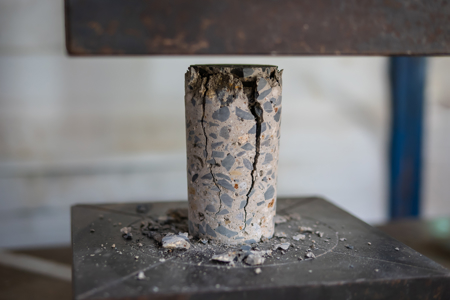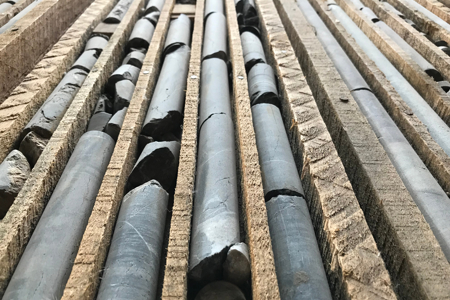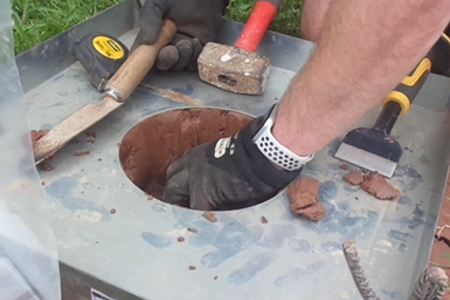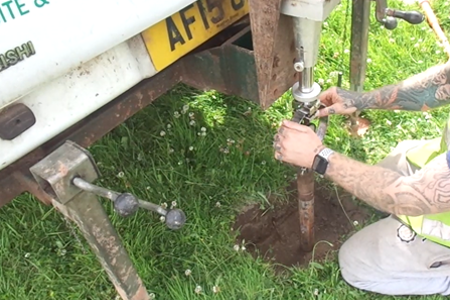What is a Plate Bearing Test?
The Plate Bearing Test (PBT) BS1377-9 is carried out in the field to determine the maximum bearing capacity of the soil and rocks underneath your area of work.
If your project has a shallow foundation or traffic surface, your design engineers will need to know the bearing capacity of the soil underneath. This will let them know if the ground is likely to take the anticipated load of a temporary or permanent structure. Your test results can then be used by your design team as a design parameter or to confirm the design assumption.
How is a Plate Bearing Test Carried Out?
Step 1: Our experienced field engineers will travel to your site and either carry out the test at foundation level or by digging out a shallow pit to the desired depth.
Step 2: They select a suitable machine (e.g. a JCB, forklift or other construction plant) as a reaction load to provide the load and stresses they need.
Step 3: The loading plate is placed on the ground or in the pit and connected to the reaction load with a load cell. This converts the force exerted and turns it into a measurable electrical output.
Step 4: A hydraulic jack is then used to load the steel plate onto the test area.
Step 5: Our engineer records the settlement that corresponds to each load increment.
Step 6: Your results will be available on the same or next working day, depending on when the test is performed.

What Plate Size Do You Need?
The size of plate used in a Plate Bearing Test is dependant on the type of material being tested. Before the engineer visits the site, they will have a quick discussion with you to make sure all your requirements are met on the day. Plates come in a variety of sizes ranging from 300 mm – 720 mm in diameter and the one you need will depend on the following factors:
- Thickness of material being tested
- Particle size of material being tested
- Zone of Influence depth needed
If you have any questions or are unsure if your construction plant is heavy enough to provide the reaction load needed, our friendly experts will make sure all your concerns are smoothed out prior to the test. This will help us achieve a more rapid service and ensures you receive your results as quickly as possible.
What’s in a Plant Bearing Test Report?
The PBT report will be presented as a logarithmic, load-settlement graph with the load applied plotted on the X-axis and the settlement results plotted on the Y-axis. Using mathematical formulae we can calculate:
- The ultimate load for the plate
- The ultimate bearing capacity of soil at a certain depth
- The safe bearing capacity of the soil from the area tested
After you receive the report, if you have any queries about your test results, please don’t hesitate to contact one of our team, who will be more than happy to answer any questions you may have.
If you would like to book a PBT test or discuss your site requirements, you can find details on how to get in touch by visiting our contact page.
Frequently Asked Questions
What is the plate bearing test?
The Plate Bearing Test is a field test used to determine the bearing capacity and settlement characteristics of soil or subgrade material at a construction site. This test is particularly useful in evaluating the strength of the soil for foundation design, road construction, and other infrastructure projects where soil strength is crucial for supporting loads.
What is a plate load test as per BS1377
The Plate Load Test (PLT) as per BS 1377 is a field test used to determine the bearing capacity of soil and the settlement characteristics of the soil at a construction site. The test is typically used for foundation design, especially in determining the suitability of soil for supporting structural loads, such as in the case of roads, buildings, or other infrastructure projects.
BS 1377 is a British Standard that provides guidelines for soil testing methods. Part 9 of BS 1377 specifically deals with field tests for determining the bearing capacity of soils. The Plate Load Test (PLT) is one of these tests and helps engineers to determine the bearing capacity and settlement characteristics of subgrade materials for foundations.
What is the British standard plate load test?
The British Standard Plate Load Test is a field test used to measure the bearing capacity and settlement characteristics of soil under loading conditions. It is a key test for determining the suitability of the soil for foundation design, particularly in assessing how much load the soil can bear without experiencing excessive settlement.
The British Standard Plate Load Test follows the procedures outlined in BS 1377, specifically Part 9, which provides guidelines for field tests to determine the bearing capacity of soil. The test simulates the real-world behavior of soil under applied loads, which is critical for understanding how soil will react when subjected to the loads of a building, road, or other infrastructure.
How long does a plate bearing test take?
The duration of a Plate Bearing Test (PLT) can vary depending on several factors, including the type of soil, the specific site conditions, and the load increments being applied. However, on average, a Plate Bearing Test typically takes between 1 to 6 hours to complete.





